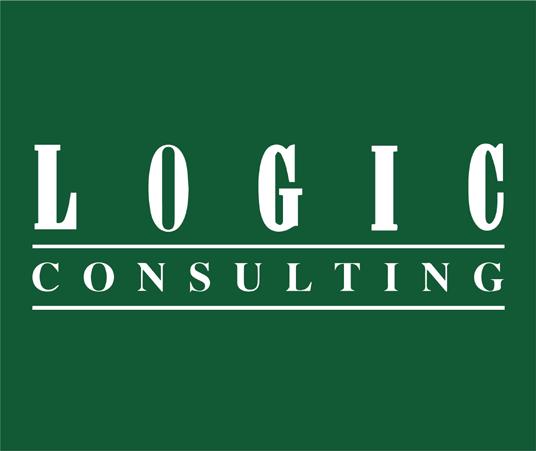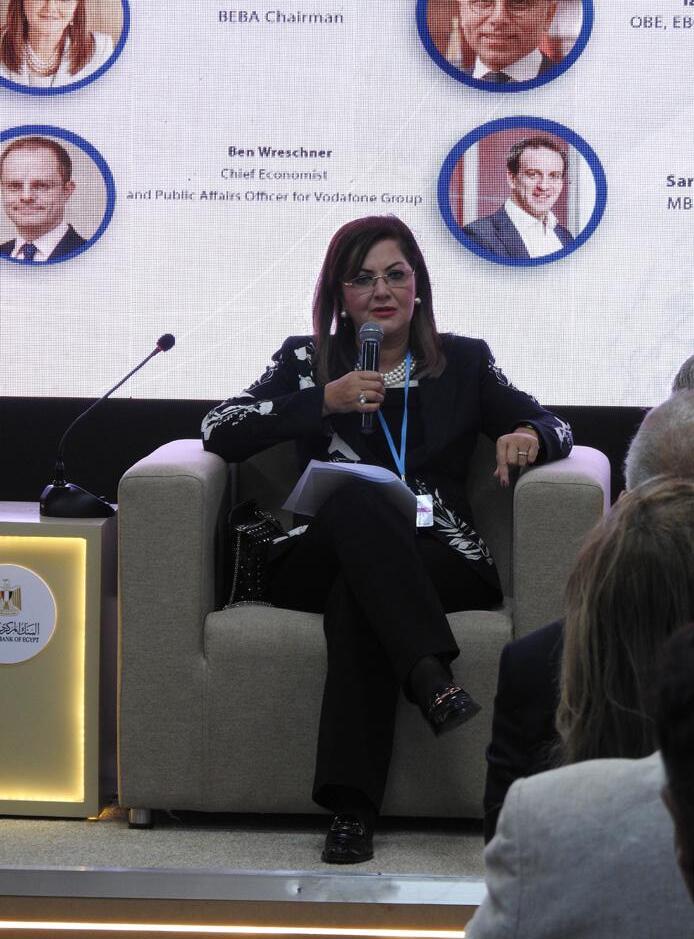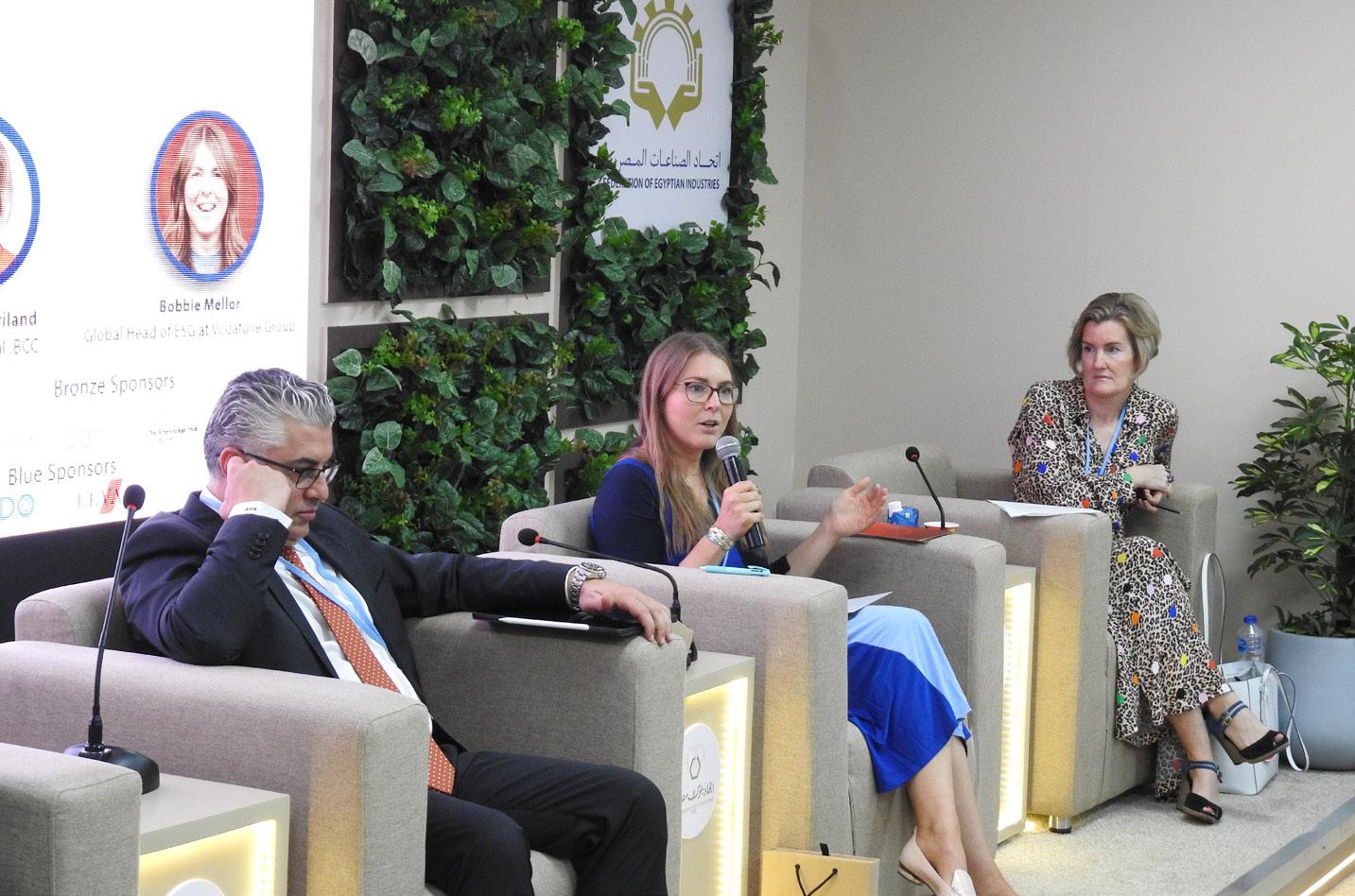
11 minute read
Egypt: Determining the Shape & Pace of Energy Market
Referring to the latest publication by LOGIC Consulting, the regional leading management consulting firm that provides multidisciplinary services including strategy, governance, organization development and digital transformation for both the private and public sectors in multiple industries, their featured article on “Egypt Energy Outlook” tackled how Egypt is in a good position to make a significant contribution to energy security regionally & globally.

The global energy landscape is experiencing huge transformation. Countries are exploring sustainable substitutes to current energy generation methods, diversifying their investments and pouring funds into the development of renewable technology. Also, governments are putting energy security at the forefront of their agendas. While this has meant efforts to diversify the energy mix away from fossil fuels and towards renewable energy, it has also driven countries to diversify the sources of their energy imports. This has placed Egypt in a good position to make a significant contribution to energy security regionally & globally.
LOGIC Consulting Energy Outlook Report tackled 4 main questions that will be discussed thoroughly in the following pages:

1. Why is Egypt a Potential Regional Energy Hub?
2. What Could Egypt Export?
3. To Which Countries?
4. How Could Egypt Boost its Energy Export?
Egypt has been racing to become a Regional Energy Hub, but Chances are Getting Higher, Why?
1. Abundant Natural Resources
A. Natural Gas
Egypt is the third largest dry natural gas producer on the continent following Algeria and Nigeria. According to the Oil & Gas Journal (OGJ), Egypt held proven natural gas reserves of 63 trillion cubic feet, as of January 2021. Egypt achieved self-sufficiency of natural gas 3 years after discovering the Zohr gas field in 2015, representing 40% of Egypt’s total gas output. Yet, the natural gas in Egypt still requires exploration efforts. The country’s gas exploration plan for the fiscal year 2022/2023 is expected to add 150 million cubic meters to gas production per day.
B. Renewable Energy:
Egypt enjoys an abundance of renewable energy resources – solar, wind, biomass and hydro. Egypt is leading the Arab world in terms of operating wind and solar power which reached a capacity of 3.5 gigawatts (GW).
Graph- Capacity of operating wind and solar power in Arab Countries- 2022
C. Nuclear Power:
Regarding the leaps that have been taken in nuclear power, the GoE, in partnership with the Russian Company Rosatom, is working on the construction of a nuclear power plant in Al-Dabaa in Matrouh Governorate (northwest). The first unit of this project is planned to enter force in 2026.
2. Global Energy Changes are in our Favor
A. Global Energy Crisis
Following the Russian-Ukranian war, European countries have been facing an energy crisis, with Russia dropping supply by up to 60% in gas deliveries since June 2021. Europe is now in a race against time to find a replacement for Russia’s natural gas. The impact of the current energy crisis will not be limited to Europe alone. Rises in gas prices are already being felt hard on low-income energy importers in Africa, Southeast Asia, and Latin America. Also, although the MENA region is a major energy producer, many of the MENA countries are struggling to meet growing domestic energy demand. So, the energy crisis is an opportunity for other gas exporters around the world, including Egypt.
Besides, JP Morgan’s research shows a $400 billion oil underspend to 2030 and paints a grim picture in which all energy investment- in both fossil and non-fossil fuels- needs to grow at a faster rate than the prevailing investment implies.
B. Green Direction

Most green plans are still in their infancy, but the direction is clear. Although Fossil fuels still account for more than 80% of global energy production, cleaner sources of energy are gaining ground. The International Renewable Energy Agency (IRENA) estimates that 90% of the world’s electricity can and should come from renewable energy by 2050. Renewable energy is actually the cheapest power option in most parts of the world today. Prices for renewable energy technologies are dropping rapidly. According to a UN report, the cost of electricity from solar power fell by 85% between 2010 and 2020. Thus, Egypt could benefit from emerging synthetic fuel markets and profit from energy carrier exports to neighboring countries.
C. Increasing Energy Demand:
According to BP (2019), the Middle East will face an annual increase in energy demand of around 2% until 2040. The power, transport, industrial, and non-combusted sectors are mainly responsible for the high increase in final energy consumption. Energy demand is increasing due to the installation and expansion of seawater desalination capacities in most MENA countries. Besides Mena Region, global electricity demand is projected to triple by 2050 as sectors electrify and hydrogen and hydrogenbased fuels increase their market share due to decarbonization, according to McKinsey Report “Global Energy Perspective 2022”.
What Could Egypt Export?
I. Green Hydrogen & Green Ammonia
Egypt has recently adopted a vision to be a global and regional hub for green hydrogen production, storage and export. In fact, Egypt’s green hydrogen project plans currently amount to almost 12 GW, equivalent to more than 1.57 million tons of green hydrogen. Not only do these projects rank Egypt among the top 3 green hydrogen pipelines globally, but if implemented fully, they could provide one-sixth of the 10 million tons of green hydrogen the EU plans to import by 2030. Besides, Egypt is the world’s seventh largest ammonia producer, just behind Saudi Arabia, which is the largest producer in the MENA region. Already a major ammonia producer, Egypt could utilize part of its existing ammonia storage and transportation infrastructure for green ammonia. As such, green ammonia is likely to form a central part of Egypt’s low carbon hydrogen strategy for both domestic use and exports
II. Electricity:
Egypt is trying to make use of its power surplus. The total capacity produced by Egypt is about 59,200 MW and the maximum consumption on the electrical network is about 33,000 MW. Egypt, which has achieved an electricity surplus of more than 25%, is implementing electricity linkage projects with African and European countries to enhance the sector’s reliability and allow for the exchange of generated electricity at the subregional level. The country has already linked its electrical grid with Sudan, Libya and Jordan, with a scheduled plan to establish more power linkages with other Arab and African countries
III. Natural Gas:
Natural gas consumption has remained relatively flat, allowing Egypt to export some of its surplus natural gas via pipelines and as Liquefied natural gas (LNG). LNG exports witnessed significant growth, reaching 6.5 million tons in 2021, compared to 1.5 million tons in 2020. Exporting natural gas, instead of consuming it locally, would raise the government’s earnings. Natural gas is sold by the ministry of petroleum to the ministry of electricity for the purpose of local consumption for only LE3 per Mbtu. If exported, it could be sold for $30 in the European market. Egypt has a relatively large natural gas export infrastructure, but it’s underutilized. With a total length of 7,485 km of transmission grid and 38,000 km of distribution grid, Egypt has the largest infrastructure in the East Mediterranean area. Thus, with new discoveries, the presence of significant natural gas reserves in Egypt, as well as the availability of export infrastructure, gas supply expansion shall be feasible.
To Which Countries?
1. Europe
Europe is a net importer of natural gas, with demand far exceeding the region’s total proven reserves, resulting in a greater reliance on natural gas from other supplying countries. Egypt is well-positioned to profit from the present energy crisis in Europe and might soon get to be a major energy exporter to the EU if it is able to sell LNG in large quantities to the EU .
2. Africa
African countries — especially Nile Basin countries — have acute electricity shortages. In December 2019, President El-Sisi announced that Egypt was prepared to export 20% of its surplus electricity to African nations. Beyond Libya, Egypt is poised to contribute to the electrification of sub-Saharan Africa where access to electricity averages under 50%. Also, through Libya and Sudan, Egypt could theoretically export electricity to neighboring countries such Chad whose 2018 access to electricity rate stood at only 12%. Egypt also turned to Djibouti & Burundi, where agreements were done to increase Egyptian investments and to allow Egyptian companies to contribute to infrastructure projects and electricity projects.
3. Arab Countries
Power demand in the Arab region is expected to grow by 3.3% each year until 2035 while populations are increasing at an even faster rate. With this growing demand, IHS expects that the Middle East will need 277 gigawatts (GW) of additional capacity to boost installed capacity to 483 GW by 2035. The demand for electricity in the region is expected to increase due mainly to economic development and population growth, combined with increasing needs for water desalination and air conditioning. Other countries such as Jordan, Lebanon, Morocco, the Syrian Arab Republic and Tunisia are net importers whose domestic energy mix has historically been more diversified, though it remains heavily dependent on imported fossil fuels. Besides, some countries’ energy demand is rapidly outpacing supply, like Iraq.

How Could Egypt Export More and Make Sustainable Gains from The Current Changes in The Energy Markets?
1. Focus on Domestic Gas Supply
Egypt needs to focus on domestic gas supply, displacing the use of the still widely used diesel, which is putting a heavy burden on the government as Egypt imports about 25 –30% of its needs of petrol and diesel fuel. The Zohr field has been producing less than initially expected, and fresh offshore exploration is slowing down. Also, Egypt appears to rely on re-exporting gas imported from its regional neighbors, leaving it with the possibility to profit only from transit and liquefaction fees. It has also retained the right to use Israeli gas imports domestically if its own demand increases, which could be translated into less exploration efforts. On the demand side, gas demand in Egypt may rise very rapidly. Egypt is already the largest gas consumer in Africa and there is strong potential for further growth, especially in the power sector where gas is the dominant fuel. So, Egypt should work on accelerating exploration and diversifying investors to ensure energy security and sustainable exports’ growth over the long-term.
On the side: Importing LNG doesn’t necessarily mean that Egypt would become an all-year-round importer. It so happens that domestic power demands are stronger in summer when demand in Europe is low and while it’s coincidentally quite the opposite in winter times. This means that Egypt could opt for a seasonal export model.
2. Attract Investments in Gas Exploration, Renewables & Green Hydrogen Facilities
Discovering a new natural gas field does not happen overnight. It needs investments of billions of dollars by international oil companies (IOCs). Moreover, extra foreign direct investment (FDI) should be pumped into the oil and gas industry to secure high production levels of natural gas in the future. Unfortunately, FDI in the Egyptian oil and gas sector registered net outflows of $ 1.7 billion during the first nine months of FY2021/22, according to the CBE. Also, there is now a huge importance of attracting foreign investment in green hydrogen as Egypt is seeking to attract more cooperation and investment in green transformation projects.
3. Develop Infrastructure
Countries with infrastructure for oil and gas, like Egypt, could build on their experience in handling gas and liquid fuels. The share of renewable energies in the installed capacity – including variable solar PV and wind energy – will increase in the medium to long term. This is expected to present the grid with a variety of technical challenges. Also, Egypt also needs to maximize the efficiency of its liquefaction complexes so that they better process additional Egyptian gas or surplus gas from Egypt’s regional partners such as Israel and Cyprus. These two countries have agreed to liquefy their surplus gas in Egypt for export to European and Asian markets. It is possible that Iraq and Greece, which currently lack significant capabilities to liquefy gas, could be potential new partners with which Egypt might conclude such agreements.


DAY 1: Opening Session:
The Business Forum included a keynote speech from H.E. Dr. Hala El Said Egyptian Minister of Planning and Economic Development who stated the government’s commitment to green projects; so far the national investment in green projects is 40% mainly in transport and water sectors aiming to reach 50% by 2024/25. The minister gave an overview of the government’s key polices to help support the business community in its transition, a set of environmental and sustainability guidelines to help entities in their transition is now available.

After the minister’s keynote speech H.E. Gareth Bayley Ambassador to the UK in Egypt revealed that the UK is the biggest foreign investor in Egypt. The ambassador emphasised the importance of investing in green projects sooner rather than later ‘Our mission is to support the re-imagination of investment portfolio and green partnerships between UK and Egypt,’ said the ambassador. The opportunities in green projects in Egypt are immense in solar, wind and green hydrogen.


Ben Wreschner Economist and Public Affairs Officer for Vodafone highlighted that the road to green economy is the road to digital economy. Higher returns could be achieved by companies which invest in green projects. There are of course some barriers, which are around three main principles: shifting time horizon, avoiding fragmentation and exporting innovation from Africa to Europe. Vodafone managed to sign a renewable energy deal with the Egyptian government, it is the start of a long-term investment in renewable energy and hopefully to other companies too.
Sarah Howard MBE, BCC Chair, discussed that following on from COP26 and through the BCC’s daily engagements with over 53 chambers across the UK, it was made clear that larger firms are more likely to transition to net zero than smaller ones. The BCC has a large network through which it has been conducting in-depth research which lead to the richest insights into what businesses need to transition to net zero. The role of the BCC is to pass these findings to the government and to business leaders, specially in times where SME’s are facing numerous challenges in the current global economic situation. The BCC is keen to show how vital it is to see businesses from every corner are brought together and experience the power of partnerships between public and private sectors, which should be the way forward.

Plenary Session I:
This was followed by ‘Transition between Trade and investment to Circular economy and sustainable projects and procedures. The speakers for this session were, H.E Waleid Gamal MSc, Suez Canal Economic Zone, Basel El Hini, Chairman Misr Insurance Holding Group, Shevaun Haviland, Director General BCC Chambers of Commerce and Bobbie Mellor, Global Head of ESG at Vodafone Group. This session was moderated by Caroline Ray, Regional Director East Africa, Arup Group. >>>
In this session, the speakers discussed their entities efforts to commit to net zero; the Suez Canal has already launched its first pilot green Hydrogen project and many more will follow in the near future. Vodafone revealed their plans for a new refurbishment project of old phones in its attempt to cut e-waste and at the same time create more job opportunities. The speakers also discussed the trade and investment opportunities to move into a circular economy in different sectors as well as the challenges facing SMEs in their transition to green economy and how partnerships between public/ private sectors and government/ private sectors could help support net zero economy while trying to deal with post pandemic effects as well as other major issues in the world.
Plenary Session II:
Plenary Session II ‘Green Finance / Enabling conditions including Behavioural Changes to achieve Climate targets’ The speakers for this session were Vikas Aggarwal - Regional Head of Public Affairs – Europe, Eurasia, the Middle East and the Americas - ACCA Global, Faisal Eissa-General Manager-Lekela Egypt, Boutrous Klink-CEO Middle East and BahrainStandard Chartered Bank and Dr Sofia G. Vaz –Programme Director, Environmental Engineering, NOVA Cairo Branch- The Knowledge Hub. This session was moderated by Magued Ezzel DinCountry Senior Partner and Deals Leader - PWC
The Green finance session discussed the immense funds needed for green transition and the financial burdens faced by SME’s to help them reach green targets especially in emerging markets. Many initiatives have been taken by various countries to help with the green transition like the issue of green bonds in Egypt and Saudi Arabia. This transition to green finance will require many entities to collaborate including governments, multinationals and the private sector in order to achieve the essential targets especially in developing countries who are significantly affected by the climate change.


A networking lunch was next on the agenda where all delegates, speakers and attendees got to exchange ideas where they used the Forum’s networking app to identify their relevant matches. The delegates were then free to












